
If your furnace is malfunctioning, it could be a faulty control board. Find out what a furnace control board replacement costs for parts, labor, and more.
Spot the signs before a failed AC leaves you sweating


Poor cooling and leaky refrigerant are the most common signs of a bad condenser.
Supply air should be 14 to 20 degrees cooler than intake air.
Annual coil cleanings will help the condenser run smoothly.
Replacing an AC condenser costs $2,500 to $5,000.
Nothing feels more frustrating than coming home on a hot summer day to find something seriously wrong with the AC. When you expect a crisp, cool welcome and come home to humid heat, you’ll want to find the source of the problem and some relief as quickly as possible. To get your AC up and running again faster, watch for these five signs of a bad AC condenser.
A bad AC condenser is often accompanied by leaking refrigerant, and AC refrigerant leaks are dangerous. According to the U.S. Environmental Protection Agency, exposure to AC refrigerant poses risks of chronic toxicity and asphyxiation, and these chemicals are flammable. Inhaling refrigerants can cause headaches, nausea, and vomiting.
If you suspect an issue with your AC condenser, hire an AC repair technician ASAP. Turn off your unit and open windows to ventilate your home if you think you have a refrigerant leak.
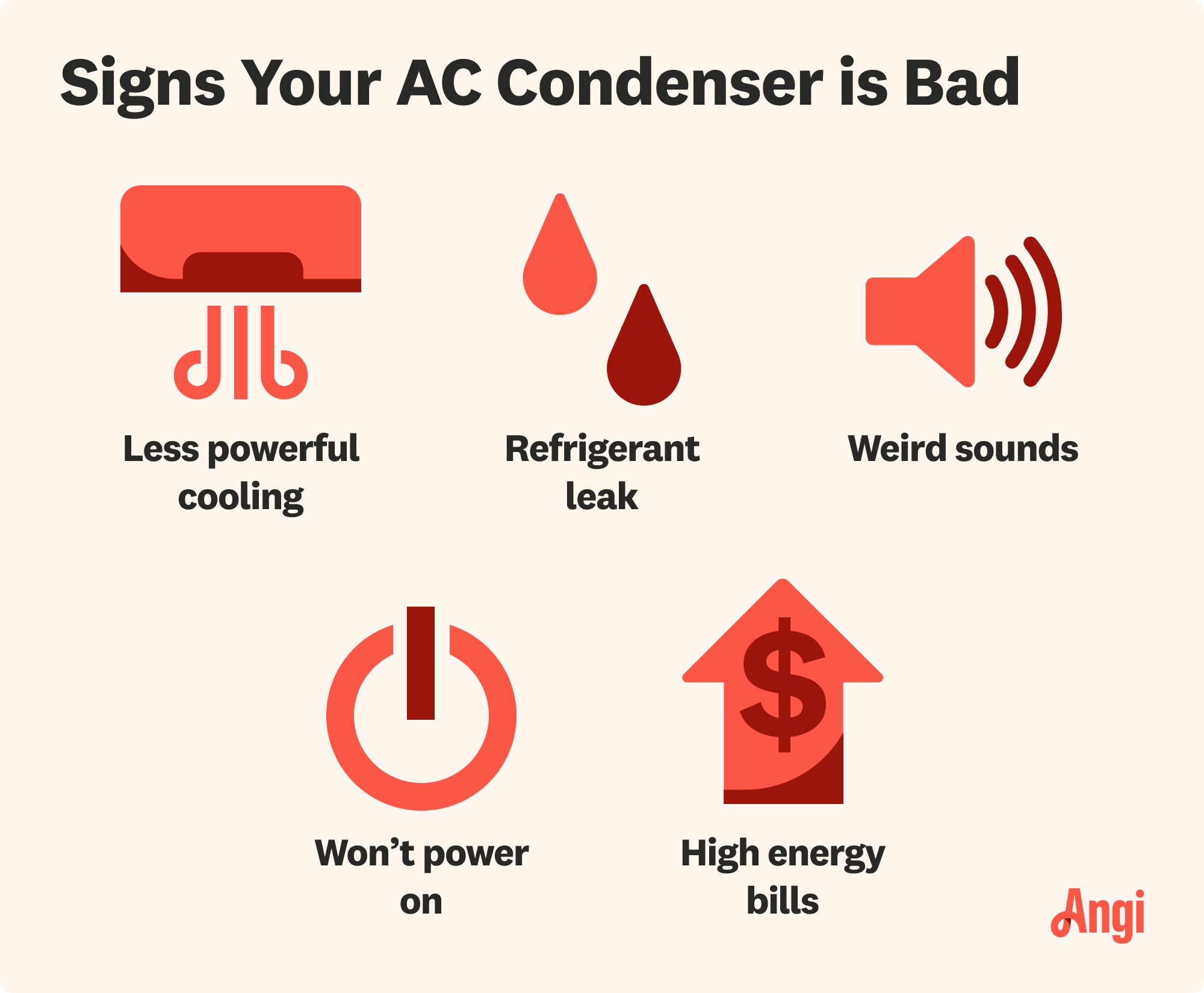
Most homeowners can tell that their AC condenser is faulty by keeping an eye (or ear) out for these common signs.
Your thermostat is set to 72 degrees Fahrenheit, so why does it feel so hot inside your home? While other issues like blocked vents or old air filters can cause this problem, it’s also a major sign of a bad AC condenser.
How can you tell if your AC isn’t cooling properly? Measure the air temperature near AC vents. Then, measure the temperature near a supply vent and a return vent. The air supply that’s cooling your home should be 14 to 20 degrees cooler than the intake air.
If your AC doesn’t seem to be cooling as efficiently, it may be because the condenser coil is dirty, or it could be a sign that the condenser needs to be replaced.
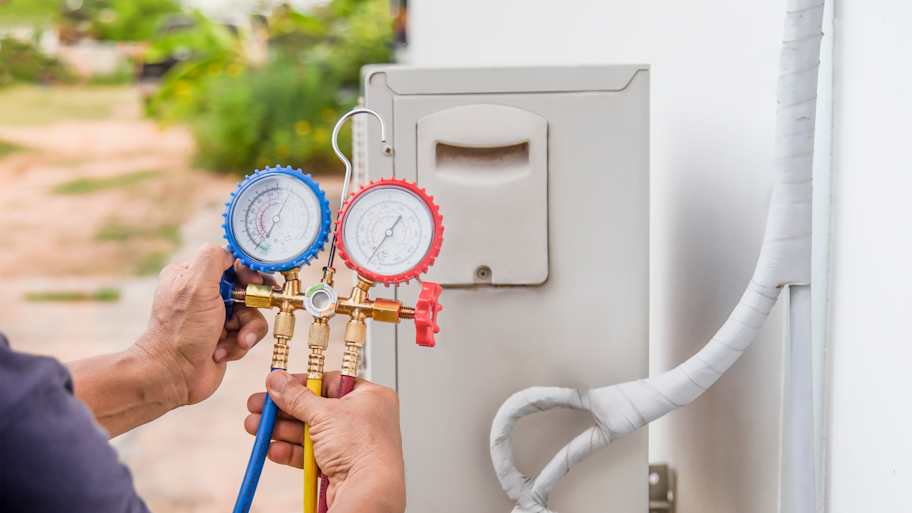
One of the most common signs of a bad AC condenser is that your AC is leaking refrigerant. This can cause the system to blow out warm air from your vents, or it can even freeze AC coils. Don’t attempt to clean up or fix leaking refrigerant yourself. This job should always be left to a local AC repair pro.
When something is wrong with your AC’s condenser, there are several unusual noises it might make as a warning.
Your AC may emit a hissing noise if there is a refrigerant leak somewhere within the system.
Because the condenser is on the outside of the unit, it could rattle if something gets caught on the AC unit or if a condenser part has come loose.
Similar to any rattling noises, your condenser may make grinding noises if something is stuck or a part comes loose in the condenser or in the AC unit.
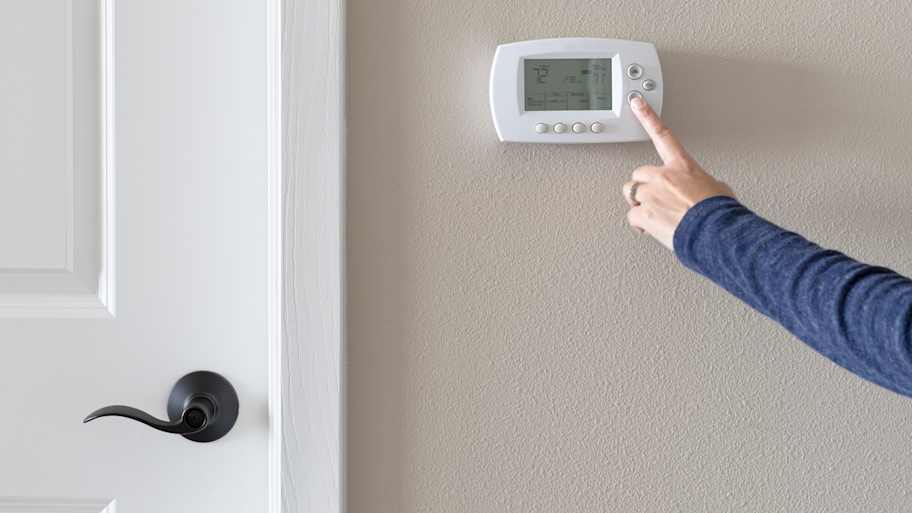
A faulty condenser can cause the AC to blow out warmer air than usual, but another sign of a bad AC condenser is if the AC won’t turn on at all. However, because an AC that won’t power on could also be an issue with the thermostat or contactor relay switch, you’ll need a pro to diagnose the issue.
Another sign that your AC condenser is worn out is that your energy bills are higher than usual when you run your AC unit. This means the system is working harder and less efficiently to cool your home, signaling that something is wrong with one of the AC parts.
The U.S. Environmental Protection Agency requires certified technicians to handle any repairs or part replacements that involve working with refrigerants, under Section 608 of the Clean Air Act. That means if you notice any of the above signs of a bad AC condenser or think something else could be wrong with your AC unit, it’s time to call in the pros.
You can try adjusting your thermostat settings and changing the AC filter first, but if that doesn’t fix your faulty AC, hire a pro to inspect, diagnose, and resolve the issue.
HVACs are one of the most complicated and essential systems in our homes. To avoid further damage or safety risks, always hire a certified HVAC specialist to repair or replace broken parts.
You shouldn’t attempt to DIY repairs or a replacement on your AC condenser. It’s important to have the proper training and certification to handle refrigerants—otherwise, you risk harming yourself and the environment. Also, DIY repairs on an AC system can void the warranty, leaving you on the hook for repair and replacement costs.
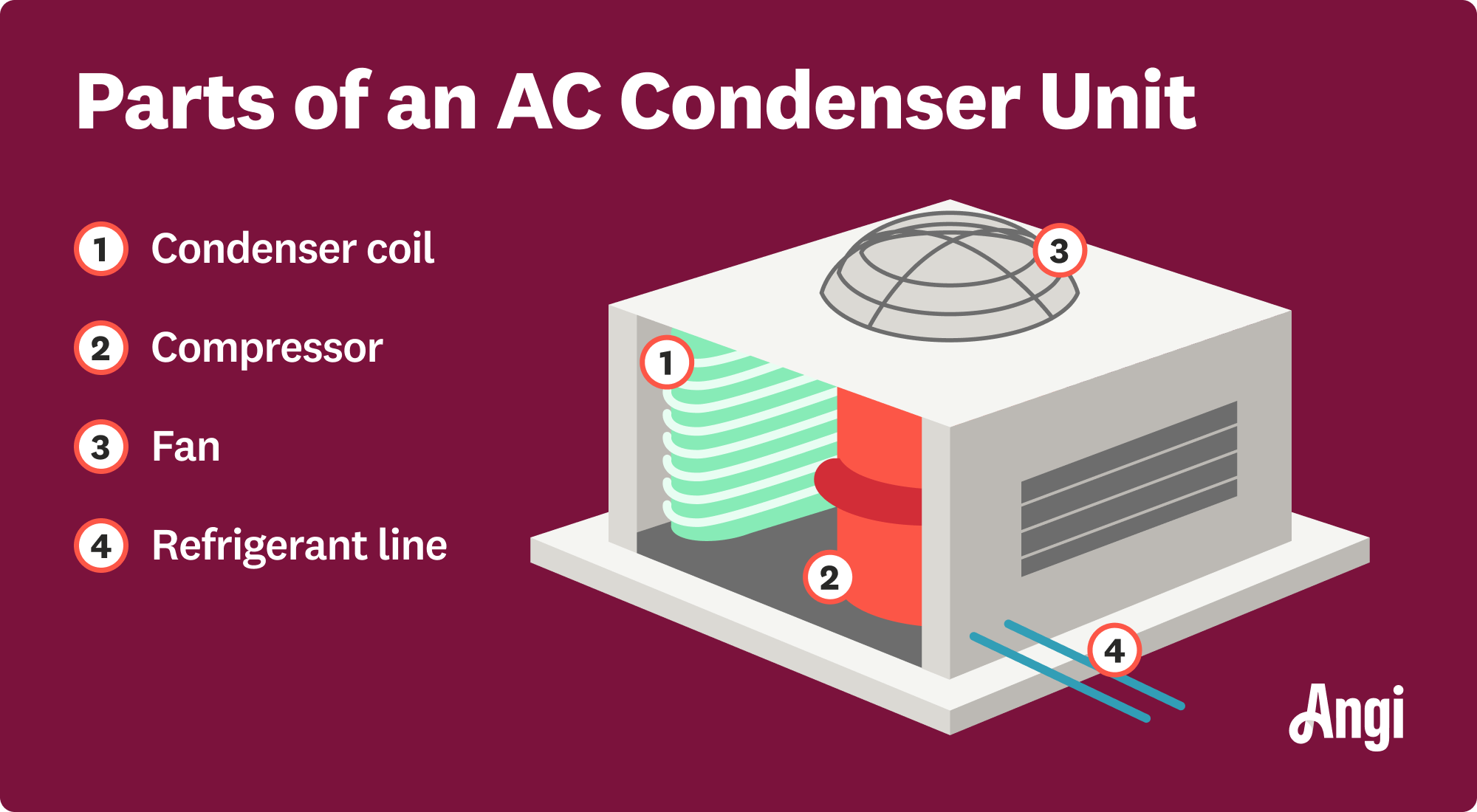
Keeping up with regular HVAC maintenance is the best way to ensure all parts are operating smoothly. Here are a few essentials for maintaining your AC condenser:
Clean the coils: Hire a pro to clean the condenser and the evaporator coils once per year.
Change AC filters: Be sure to regularly clean or change out your AC filters (at the indoor part of your system) at least once every 90 days.
Schedule annual inspections: Hire a pro to do a thorough inspection and tuneup on your AC at least once per year. A pro can catch potential problems early, saving you more money on bigger repairs.
The condenser is one of the main parts of your AC system, so a bad condenser will require a bigger investment to repair or replace compared to a faulty capacitor or drain line. Repairing an AC condenser costs $100 to $400 and involves cleaning the coil or fixing bent fins.
Often, though, when an AC condenser stops working, a pro needs to replace it. Replacing an AC condenser costs $2,500 to $5,000, depending on the AC size, brand, and any warranty coverage.
From average costs to expert advice, get all the answers you need to get your job done.

If your furnace is malfunctioning, it could be a faulty control board. Find out what a furnace control board replacement costs for parts, labor, and more.

Gas furnace replacement costs depend on the type of furnace you want and installation fees. Our guide explains all the factors involved in a new furnace cost.

The cost of a new AC unit depends on the size and type. Our guide breaks down AC replacement cost factors so you can decide which option matches your budget.

Not sure which type of furnace humidifier is best for your home? We’ve broken down four different options, explaining how they work and their benefits.
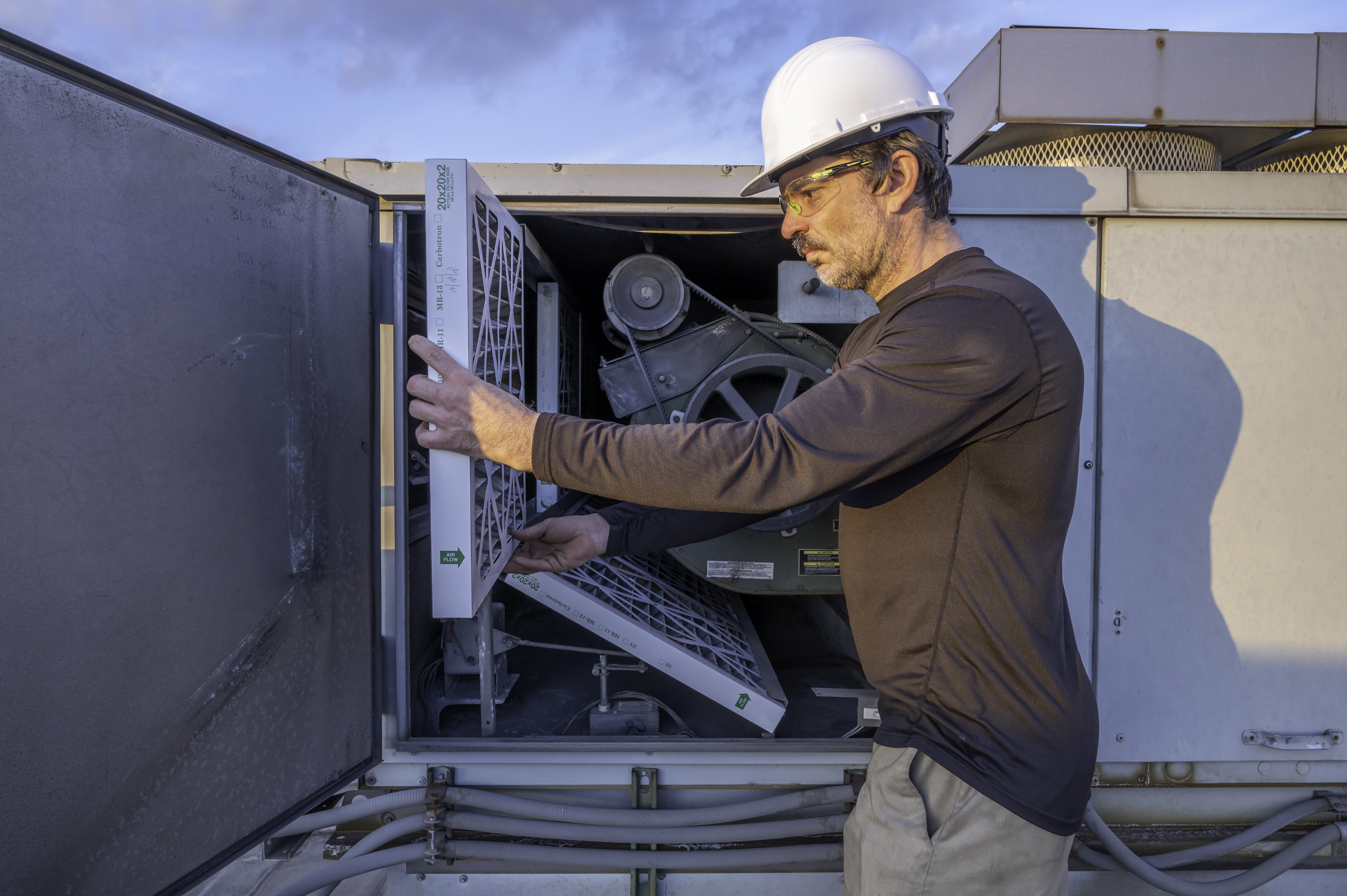
Wondering who to hire for swamp cooler installation? Learn when to call an HVAC contractor, electrician, or handyperson, and what to expect.

Not sure which kind of thermostat is best for your home? Here’s an overview of three types of thermostats so that you can choose the right one for you.